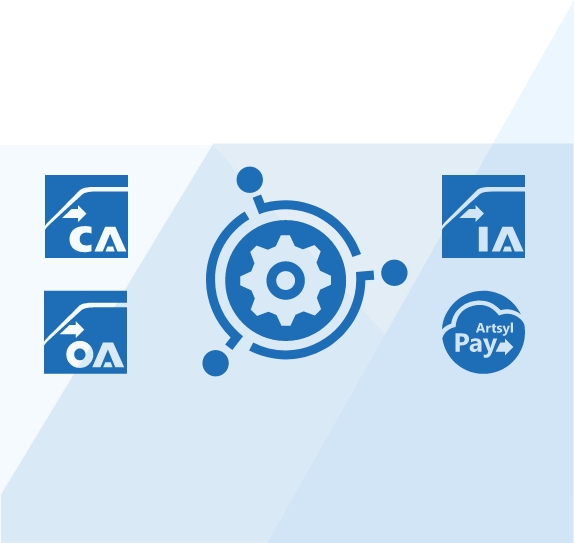In the intricate world of business finances, the Accounts Payable (AP) process serves as the beating heart, ensuring a harmonious flow of resources. At the core of this operation lies a pivotal element often overshadowed – cost management. Imagine this financial journey as a grand tapestry, where every thread represents a transaction, and every knot tied symbolizes a financial commitment.
Key Takeaways
Cost management in AP is not just about balancing the books. Beyond the numerical entries in the ledger, effective cost management in AP carries profound implications. Picture a well-managed AP process as the lighthouse in a storm, guiding a business through financial uncertainties. It ensures resources are allocated judiciously, preventing leakages that could erode the very foundation of financial stability. Let’s explore in more detail!
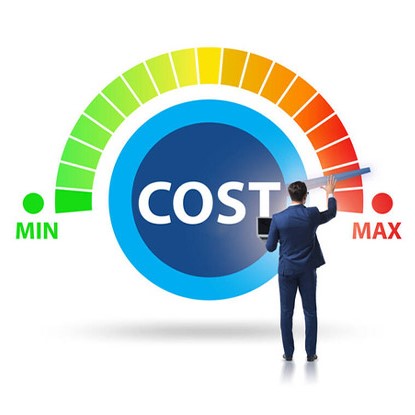
Optimize Your Expense Workflow with InvoiceAction
Streamline your accounts payable process, reduce manual tasks, and enhance cost management efficiency. InvoiceAction automates invoice data capture, approval workflows, and payment processes, ensuring accurate financial data and minimizing operational costs.
The Foundations of AP Cost Management
In the turbulent waters of business, financial health is the lifeblood, and navigating this sea demands a steady hand on the rudder. Among the essential tools aboard any business vessel, effective cost management stands out as a beacon of stability, guiding companies towards calmer waters and ultimately, towards sustainable success.
Imagine cost management as a pebble cast into a still pond. The initial ripples, representing reduced expenses, quickly expand, impacting various aspects of a business’s health:
- Financial resilience: By plugging resource leaks and optimizing resource allocation, companies gain financial agility, able to weather unexpected storms and capitalize on emerging opportunities.
- Enhanced profitability: Every dollar saved is a dollar earned, and through diligent cost management, profit margins rise, providing the fuel for reinvestment, growth, and innovation.
- Improved resource utilization: Identifying and eliminating wasteful spending frees up valuable resources, allowing for strategic investments in areas that drive true value and competitive advantage.
- Boosted employee morale: Seeing careful fiscal stewardship fosters confidence and trust within the team, encouraging greater accountability and engagement.
- Competitive edge: In a cost-conscious market, those who manage expenses efficiently gain a clear advantage, outmaneuvering rivals and attracting discerning customers.
Therefore, cost management is not merely a matter of tightening belts; it’s a holistic approach to navigating the dynamic seas of business. By embracing its ripples, companies gain the resilience, agility, and responsibility needed to not only survive, but thrive in the long run.
So, if you seek to chart a course towards sustainable success, remember this: every drop of cost saved creates a wave of positive impact, propelling your business towards a future of financial health, competitive advantage, and responsible growth.
Gain Insights for Strategic Decision-Making with docAlpha
Elevate your cost management strategy with docAlpha’s data analytics capabilities. Uncover trends, identify cost-saving opportunities, and make informed decisions. Harness the power of intelligent document processing to enhance financial visibility and drive sustainable business practices.
Book a demo now
Identifying Cost Drivers in Accounts Payable
Cost drivers in Accounts Payable (AP) are the factors that significantly impact the expenses associated with the procurement and payment processes. Identifying these drivers is crucial for organizations aiming to optimize costs, enhance efficiency, and maintain financial health. Here are the key influencers in the AP landscape.
Invoice Processing Time
The duration it takes to process invoices plays a pivotal role in determining costs. Delays in invoice approval and processing can lead to late payment fees, eroding potential early payment discounts, and affecting supplier relationships.
Error Rates and Discrepancies
High error rates, such as inaccurate data entry, incorrect invoice matching, or payment discrepancies, contribute to additional costs. Rectifying errors consumes resources and may result in late fees or strained supplier relationships.
RELATED: Automating Accounts Payable and Accounts Receivable
Manual vs. Automated Processes
The level of automation in AP processes influences costs significantly. Manual processes are more prone to errors, time inefficiencies, and increased labor costs, while automation streamlines workflows, reduces errors, and enhances overall efficiency.
Document Storage and Retrieval
Inefficient document storage and retrieval systems can incur costs related to physical storage, document loss, or time spent searching for relevant information. Implementing efficient document management systems can mitigate these costs.
Late Payment Penalties
Failing to adhere to payment deadlines can result in late payment penalties and interest charges. Timely payment is crucial to avoiding these additional costs and maintaining a positive relationship with suppliers.
Technological Infrastructure
The type of technology and software used in AP processes influences costs. Outdated systems may require more maintenance and lead to higher operational costs. Investing in modern, efficient technologies can yield long-term cost savings.
Supplier Relationship Management
The efficiency of managing supplier relationships impacts costs. A well-organized approach to supplier interactions, negotiations, and dispute resolution can prevent unnecessary costs and contribute to a collaborative supply chain.
Data Security and Fraud Prevention
Costs associated with data security measures and fraud prevention tools are critical. Investing in robust cybersecurity and fraud detection systems can prevent potential financial losses due to security breaches.
Understanding and actively managing these key cost drivers empower organizations to optimize their AP processes, reduce unnecessary expenditures, and foster financial sustainability. Regular assessments and adjustments to mitigate these factors contribute to a more efficient and cost-effective AP function.
Enhance Supplier Relationships with InvoiceAction
Strengthen your ties with suppliers by ensuring timely and accurate payments. InvoiceAction facilitates transparent communication, helps negotiate favorable terms, and optimizes cash flow, contributing to a positive and collaborative supplier relationship.
Book a demo now
Strategies for Effective Cost Management
Steering a business towards financial stability requires more than just wishing for smooth sailing. Effective cost management is the captain’s compass, guiding companies through choppy waters and leading them to calmer, profitable shores. But mastering this art requires a diverse toolkit, not just a single map. Here are some essential strategies to keep in your financial navigation kit.
- Know your numbers: Understanding your current expenses, revenue streams, and profit margins is crucial for setting realistic goals and identifying areas for improvement. Regularly review financial reports and analyze trends to get a clear picture of your fiscal landscape.
- Set SMART goals: Ditch vague resolutions and embrace Specific, Measurable, Achievable, Relevant, and Time-bound objectives. Instead of «reduce costs,» aim for «decrease administrative expenses by 10% within the next quarter.»
- Trim the fat: Analyze every expense and ruthlessly eliminate wasteful spending. Review subscriptions, renegotiate contracts, and seek alternative vendors to squeeze out unnecessary costs.
- Embrace automation: Repetitive tasks are prime candidates for automation. Invest in technology that can handle routine processes, freeing up human resources for strategic initiatives.
- Implement lean practices: Eliminate waste and optimize workflows throughout your organization. Apply lean principles like Kaizen to continuously improve efficiency and resource utilization.
- Track your progress: Regularly measure your cost-saving initiatives and adjust your strategies based on the results. Stay flexible and adapt to changing market conditions or internal needs.
- Continuous improvement: Cost management is a marathon, not a sprint. Embrace a culture of continuous improvement, constantly seeking new ways to optimize your spending and boost financial health.
RELATED: Simplifying Full Cycle Accounts Payable Invoice Process
Remember, effective cost management is a journey, not a destination. By implementing these strategies, cultivating a cost-conscious culture, and continuously adapting your approach, you can navigate the financial seas with confidence, ensuring your business reaches its full potential and enjoys a smooth journey towards sustainable success.
Prevent Fraud and Ensure Financial Integrity with docAlpha
Safeguard your accounts payable process against fraudulent activities. docAlpha’s robust controls and monitoring mechanisms detect anomalies, ensuring financial integrity. Protect your organization from potential risks and fortify your cost management strategy.
Book a demo now
Key Terms Explained
Cost Management
Cost management in the Accounts Payable (AP) context refers to the systematic approach of controlling and optimizing expenses associated with the procurement and payment processes within an organization. It involves monitoring, analyzing, and strategically managing all costs related to supplier transactions, invoice processing, and payment activities. This comprehensive oversight ensures financial efficiency, accuracy, and compliance with budgetary constraints.
Financial Control and Optimization
Cost management in AP is instrumental in maintaining financial control by preventing unnecessary expenditures and identifying areas for optimization. It ensures that every transaction is scrutinized for cost-effectiveness, aligning with the organization’s budgetary goals.
Fraud Prevention and Detection
Rigorous cost management practices act as a deterrent to fraudulent activities. By closely monitoring invoices and payment processes, discrepancies or irregularities that may indicate fraud can be detected early, safeguarding the organization’s financial health.
Compliance and Accuracy
Effective cost management ensures compliance with financial regulations and internal policies. Accurate recording of costs associated with AP activities not only aids in regulatory adherence but also prevents errors that could lead to financial discrepancies.
Supplier Relationship Management
AP cost management contributes to fostering positive relationships with suppliers. Timely and accurate payments, negotiated discounts, and transparent communication about costs create a favorable environment, enhancing collaboration and ensuring a reliable supply chain.
Cash Flow Optimization
By strategically managing costs, AP contributes to optimizing cash flow. Timely payments and negotiated terms with suppliers help maintain positive working capital, reducing financial strain and enhancing the organization’s overall liquidity.
Operational Efficiency
Streamlining AP processes through cost management initiatives improves operational efficiency. Automation, accurate record-keeping, and proactive identification of cost-saving opportunities contribute to a more efficient and agile Accounts Payable department.
Budgetary Planning and Forecasting
Cost management in AP provides valuable data for budgetary planning and forecasting. Insights into historical costs, payment trends, and potential future expenses enable organizations to create realistic budgets and make informed financial projections.
RELATED: Accounts Payable Complete Guide
Strategic Decision-Making
The data generated through cost management activities equips decision-makers with valuable insights. This information aids in strategic decision-making, allowing organizations to allocate resources effectively, negotiate favorable terms with suppliers, and adapt to changing market conditions.
Wrapping Things Up: Cost Management and AP Optimization
Cost management isn’t about deprivation, it’s about unlocking the potential within your resources. By optimizing spending, you free up energy for growth, innovation, and impact. Remember, every dollar saved isn’t just a penny earned, it’s a seed planted for a future of sustainable success, shared responsibility, and a brighter world. So, embrace the power of cost management, nurture your financial health, and watch your business blossom into a beacon of responsible growth and positive change.
Boost Operational Efficiency with Integrated Solutions
Combine the power of InvoiceAction and docAlpha for a comprehensive cost management approach. Integrate seamlessly with your existing systems, automate data processes, and gain efficiency across your accounts payable operations. Drive down costs while improving accuracy and compliance.
Book a demo now
FAQ
What is cost management in business?
Cost management in business involves the strategic planning, monitoring, and control of expenses to optimize resources and achieve organizational goals. It encompasses activities such as budgeting, forecasting, and analyzing expenditures across various departments.
Why is cost management important for businesses?
Effective cost management is crucial for businesses to ensure financial sustainability, maximize profitability, and maintain a competitive edge. It helps in identifying cost-saving opportunities, preventing financial waste, and improving overall operational efficiency.
How does cost management contribute to financial control?
Cost management contributes to financial control by establishing budgets, tracking expenditures, and ensuring that spending aligns with organizational goals. It helps in identifying variances, managing costs within predefined limits, and maintaining financial discipline.
What are the key components of cost management?
The key components of cost management include budgeting, cost analysis, cost control measures, variance analysis, and strategic planning. These elements work together to ensure efficient allocation and utilization of resources.
Invoice Automation Software
Related Videos
How can businesses prevent fraud through effective cost management?
Effective cost management includes robust controls and monitoring processes that can help detect irregularities or suspicious activities. By implementing checks and balances, businesses can deter fraudulent behavior and promptly address any anomalies in financial transactions.
How does cost management impact supplier relationships?
Cost management positively influences supplier relationships by ensuring timely and accurate payments, negotiating favorable terms, and transparently communicating about costs. Strong supplier relationships contribute to a reliable and efficient supply chain.
Is cost management only about cutting expenses?
While cost management does involve identifying opportunities to cut unnecessary expenses, it is not solely focused on reducing costs. It also emphasizes optimizing resources, improving operational efficiency, and strategically allocating resources to support long-term business objectives.
Can cost management contribute to strategic decision-making?
Yes, cost management plays a crucial role in strategic decision-making. By providing insights into costs, trends, and potential savings, it enables decision-makers to allocate resources effectively, invest strategically, and adapt to changing market conditions.
How does cost management impact cash flow?
Cost management optimizes cash flow by ensuring timely payments, negotiating favorable terms with suppliers, and maintaining positive working capital. It contributes to liquidity, reducing financial strain and supporting overall cash flow optimization.
What technologies can enhance cost management processes?
Technologies such as financial management software, expense tracking systems, and enterprise resource planning (ERP) solutions can enhance cost management processes. Automation, data analytics, and reporting tools contribute to more efficient and accurate cost management.
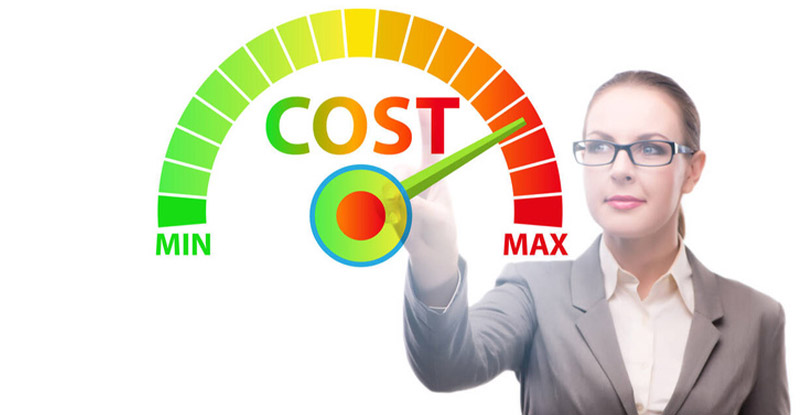



 Cost Accounting and Financial Reporting in ERP
Cost Accounting and Financial Reporting in ERP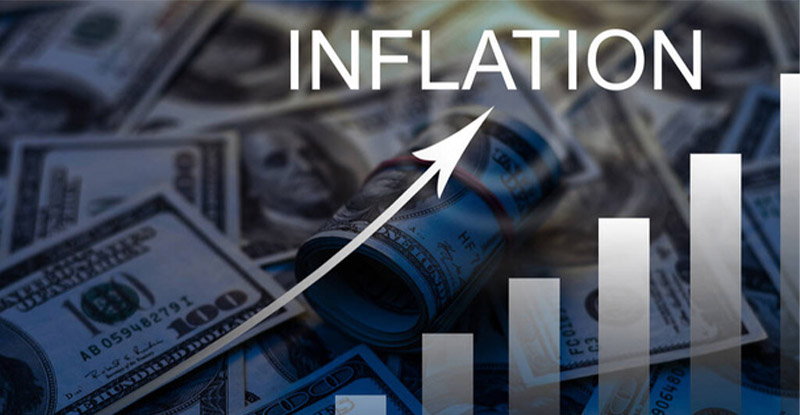 Cash Flow: Management, Definition, Tips
Cash Flow: Management, Definition, Tips Business Inventory Management: Definition, Methods, Software
Business Inventory Management: Definition, Methods, Software Cloud Invoice Management in ERP Systems
Cloud Invoice Management in ERP Systems Expense Management Made Easy
Expense Management Made Easy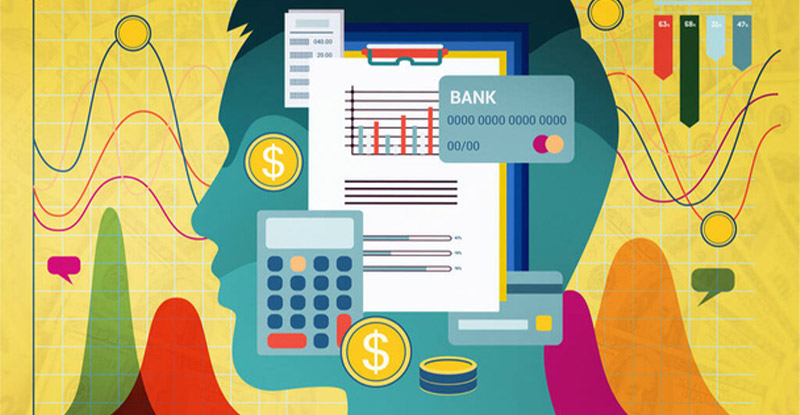 Invoice Management Guide
Invoice Management Guide
